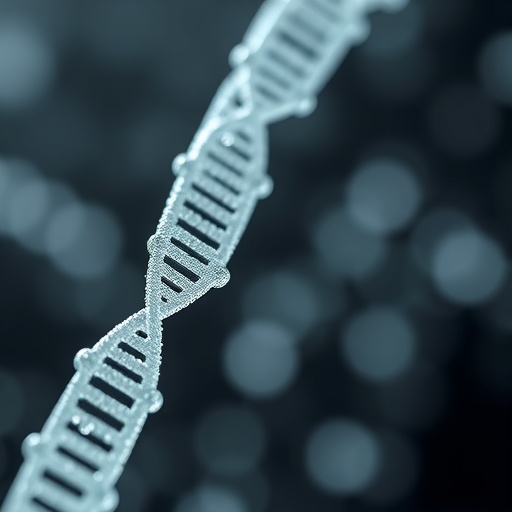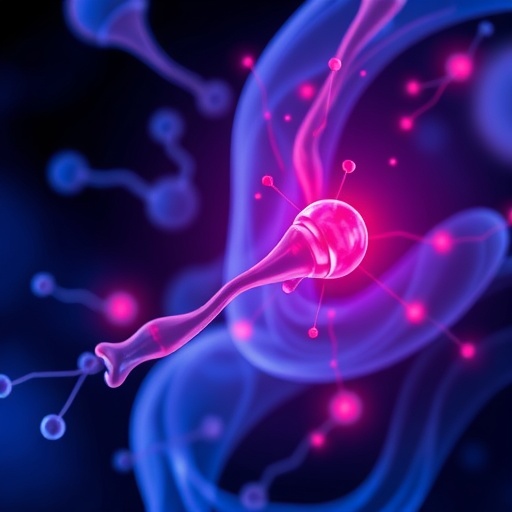In a groundbreaking advance poised to reshape the therapeutic landscape of RNA interference technologies, researchers have unveiled a novel approach to optimizing the buffer environment for small interfering RNA (siRNA)-lipid nanoparticles (LNPs). This advancement directly addresses a crucial but underappreciated biochemical challenge: lipid oxidation and the resultant formation of RNA-lipid adducts, which have long plagued the stability and efficacy of siRNA delivery systems. The study, recently published in Nature Communications, illuminates how precise buffer engineering can dramatically mitigate these deleterious modifications, potentially unlocking new frontiers in gene-silencing therapeutics.
Small interfering RNA (siRNA) molecules have attracted immense interest due to their unique ability to silence specific gene expression post-transcriptionally, opening avenues for the treatment of a wide spectrum of diseases including genetic disorders, viral infections, and cancers. However, effective delivery of functional siRNA into target cells has been a chief bottleneck. Lipid nanoparticles, with their biocompatibility and efficient cellular uptake, have emerged as leading vehicles for siRNA transport. Despite this promise, intrinsic chemical instability within the LNP matrix, particularly oxidative lipid degradation, has significantly limited clinical translation and therapeutic durability.
The crux of the problem lies in lipid oxidation, a process wherein reactive oxygen species modify unsaturated lipids within the nanoparticle membrane. This modification doesn’t merely degrade the lipid structure but also enables the formation of covalent adducts with siRNA molecules. Such RNA-lipid adducts compromise siRNA integrity and interfere with its gene-silencing function. Until now, these complex biochemical interactions received limited scrutiny, with few strategies available to counteract them. The research team, led by Estabrook et al., delves deeply into the molecular underpinnings of these phenomena and puts forward a buffer formulation paradigm that stabilizes the LNP-siRNA assembly.
Instead of focusing solely on lipid composition or nanoparticle architecture, the investigators turned their attention to the aqueous microenvironment in which LNPs are formulated and stored. Buffers are conventionally chosen based on pH stabilization and ionic strength criteria, often overlooking their role in redox chemistry and oxidation kinetics. By systematically screening a spectrum of buffer systems with varying pKa values, redox properties, and chemical compositions, the team discovered that certain buffers can act as antioxidants or radical scavengers, significantly attenuating lipid oxidation rates.
Central to their findings is the demonstration that buffers containing reducing agents and carefully controlled pH conditions can suppress the formation of lipid hydroperoxides and secondary oxidative byproducts. These additives function by intercepting reactive oxygen species before they initiate lipid peroxidation chain reactions. Furthermore, the researchers noted that particular buffer ions influence the metal-catalyzed oxidation pathways, suggesting that trace contaminants might modulate oxidative stress within nanoparticle formulations. The fine-tuning of these parameters resulted not only in decreased oxidative damage but also preserved siRNA structural integrity and bioactivity over extended periods.
The study employed a battery of sophisticated analytical techniques to characterize LNP and siRNA quality under different buffer conditions. High-resolution mass spectrometry revealed marked reductions in RNA-lipid covalent adducts when optimized buffers were used. Complementary lipidomics analyses tracked the oxidative degradation profile of lipids, confirming less extensive peroxidation. Biophysical measurements, including dynamic light scattering and differential scanning calorimetry, documented preserved nanoparticle size distributions and thermodynamic stability, parameters essential for reproducible pharmaceutical efficacy.
An additional layer of mechanistic insight emerged from in vitro cell culture assays. The optimized buffer formulations translated into substantially improved siRNA delivery efficiency and target gene knockdown levels across various human cell lines. By mitigating oxidative damage, the nanoparticles maintained their ability to escape endosomal compartments and effectively release siRNA into the cytoplasm. This finding underscores the pivotal role of buffer chemical environment not only in nanoparticle stability but also in functional therapeutic output.
The implications of this research resonate beyond the realm of siRNA-LNP therapeutics. Lipid oxidation and nucleic acid adduct formation are common concerns across numerous nanoparticle-based drug delivery platforms, including mRNA vaccines, DNA therapeutics, and even lipid-based small molecule delivery vehicles. Buffer optimization as a generalizable strategy offers a new axis of formulation refinement that complements existing material engineering approaches. This insight could recalibrate how pharmaceutical developers conceive, manufacture, and store lipid nanocarriers to enhance clinical performance.
This study also prompts reconsideration of storage and handling protocols for siRNA-LNP products. Typically, these formulations require stringent cold chain logistics to stave off degradation. However, the development of more oxidation-resistant formulations through buffer chemistry adjustments may reduce dependence on ultra-low temperatures, thereby lowering costs and expanding accessibility. Such improvements are crucial for global health applications, especially in resource-limited environments.
While the benefits of buffer optimization are compelling, the research team cautions that the balance between antioxidant protection and biocompatibility must be carefully managed. Excessive concentrations of reducing agents or metal chelators could elicit cytotoxic effects or alter nanoparticle interactions with biological membranes. Therefore, future efforts will involve meticulous in vivo evaluations and toxicological studies to refine these formulations for safe clinical translation.
Moreover, this work sets the stage for further exploration into dynamic buffer environments. For instance, stimuli-responsive buffers that adapt to physiological conditions or controlled-release systems that modulate redox states temporally might offer even greater protection of siRNA payloads. Integrating this chemical tuning with precision lipid synthesis and surface engineering could yield next-generation nanomedicines with unparalleled stability and potency.
The interdisciplinary approach taken by Estabrook and colleagues embodies the fusion of chemistry, molecular biology, and nanotechnology required to surmount complex drug delivery challenges. By shining a spotlight on the nuances of buffer chemistry, the study invites the scientific community to reevaluate often-overlooked formulation parameters. Ultimately, harnessing the full therapeutic potential of siRNA nanoparticles will likely depend on such subtle yet transformative innovations.
As RNA-based therapeutics continue to ascend as a revolutionary pillar in medicine, every barrier surmounted catalyzes a cascade of new possibilities. The elegant solution of buffer optimization demonstrated here not only enhances the therapeutic index of siRNA-LNPs but also establishes a paradigm for improving a wide array of nucleic acid delivery platforms. This advancement brings closer the reality of potent, stable, and accessible gene therapies destined to change countless lives worldwide.
Subject of Research: Optimization of buffer formulations to mitigate lipid oxidation and RNA-lipid adduct formation in siRNA-lipid nanoparticles.
Article Title: Buffer optimization of siRNA-lipid nanoparticles mitigates lipid oxidation and RNA-lipid adduct formation.
Article References:
Estabrook, D.A., Huang, L., Lucchese, O.R. et al. Buffer optimization of siRNA-lipid nanoparticles mitigates lipid oxidation and RNA-lipid adduct formation. Nat Commun 16, 8380 (2025). https://doi.org/10.1038/s41467-025-63651-4
Image Credits: AI Generated
Tags: biocompatibility of lipid nanoparticlesdelivery systems for siRNAenhancing siRNA efficacygene-silencing therapeuticslipid oxidation reductionNature Communications research studyoptimized buffer solutionsoxidative lipid degradationRNA interference technologiessiRNA lipid nanoparticlesstability of siRNA formulationstherapeutic applications of siRNA





